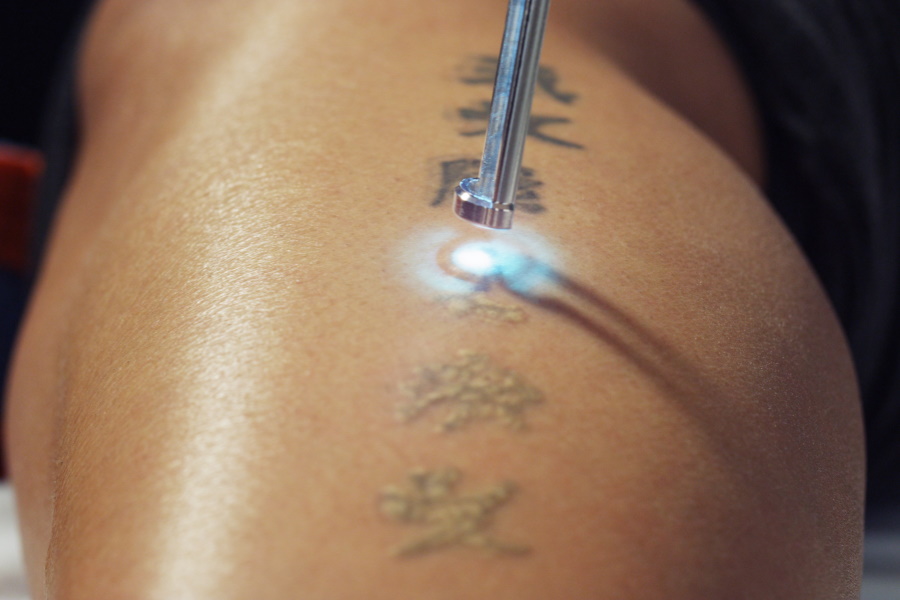Erasing a tattoo can be as complex as getting one. There are various techniques, and each is likely to leave some kind of impression. For those contemplating DIY tattoo removal, it’s wise to first discuss with a medical expert and weigh your options.
The removal process generally consists of three approaches: laser surgery, surgical excision, and home remedies. If budget allows and you’re keen on effectively removing an unwanted tattoo, laser treatment is recommended as the superior choice. However, ensure you thoroughly research and choose a qualified professional for this procedure, as results can greatly differ.
Conversely, home-based remedies have gained traction, but it’s crucial to understand their effectiveness (or lack thereof). It’s important to avoid additional regrets caused by ineffective or risky home methods. Surprisingly, removing tattoos at home can often be hazardous and inefficient.
Let’s begin with the basic fact that you have a tattoo you regret, and navigate forward from here.

What to Expect from Tattoo Removal
Tattoo removal outcomes can vary significantly, even when the method is consistent, such as in laser removal. Different factors can influence the result:
Certain Colours are Harder to Remove
Certain ink colors like red, blue, and black are easier to remove, whereas orange, yellow, pink, purple, and brown present more challenges. The toughest hues to eliminate are green, light blue, teal, and any fluorescent colors. Yet, advanced laser technologies like PicoSure and Q-switched can handle almost all colors effectively.
The Better the Tattoo, the Harder it is to Remove
High-quality tattoos created by skilled artists can be particularly challenging to remove, often embedding deeper into the skin compared to simpler tattoos.
Tattoo Removal Takes Time, Money, and Pain
Removing a tattoo with lasers usually spans several sessions, each potentially costing hundreds of dollars. The process itself is discomforting, although numbing agents can lessen the pain.
Avoid DIY Methods
Professional guidance strongly advises against over-the-counter creams and DIY remedies for tattoo removal, as they’re generally ineffective and not approved by regulatory bodies.
Position of Your Tattoo Matters
Interestingly, tattoos closer to the heart or large blood vessels are typically easier to remove.
Post-Removal Aftermath
Post-removal, expect some discomfort, potential scarring, and a period of healing that may show remnants of the former tattoo.

Laser Surgery vs Surgical Removal
It’s crucial to seek a dermatologist or a plastic surgeon’s advice when considering tattoo removal. They will assess your tattoo and recommend the most suitable method, whether it’s laser removal or surgical excision.
Regardless of the method, here’s what you might expect:
Laser Tattoo Removal
Laser treatment remains a prime choice for most tattoos, involving multiple sessions using lasers that break down ink pigments. The details of the procedure can vary depending on several factors.
- Multiple treatments are often necessary.
- Local anaesthetics alleviate pain.
- Each session may last over 45 minutes.
- Fading is an option if full removal isn’t achieved.
- Burning sensation and smells are common during the process.
- Post-treatment pain is expected.
- Side effects might include swelling and blisters.
- Scarring could be a consequence of complete removal.
- Costs are generally out of pocket.
Surgical Removal
A small tattoo might be entirely cut out in a surgical removal where a scalpel is used and the skin is sutured post-removal. For larger tattoos, a skin graft may be necessary.
- Local anaesthetics make the procedure painless.
- The skin is stitched post-removal.
- Scarring is inevitable.
- For larger tattoos, possible complications include infection.
Dermabrasion
Dermabrasion might be an affordable alternative, involving the removal of the top skin layer and then fading out the ink. Recovery can take weeks, with potential bleeding and swelling.

Home Remedies
While home-based tattoo removal methods are popular, professional advice is to steer clear of them, particularly unproven treatments and DIY solutions that might lead to skin damage or the need for professional medical intervention.
